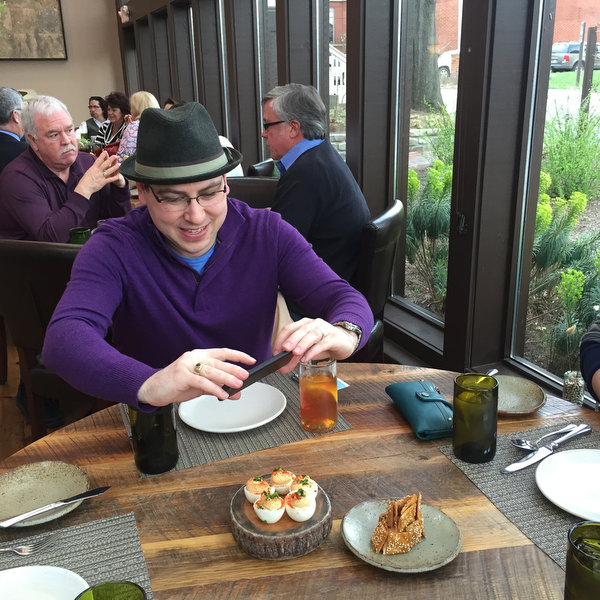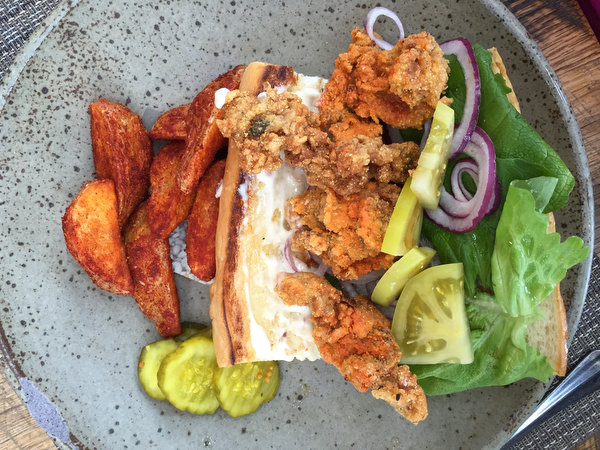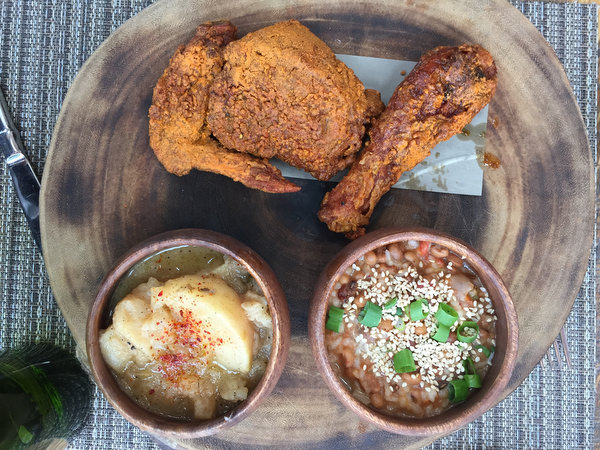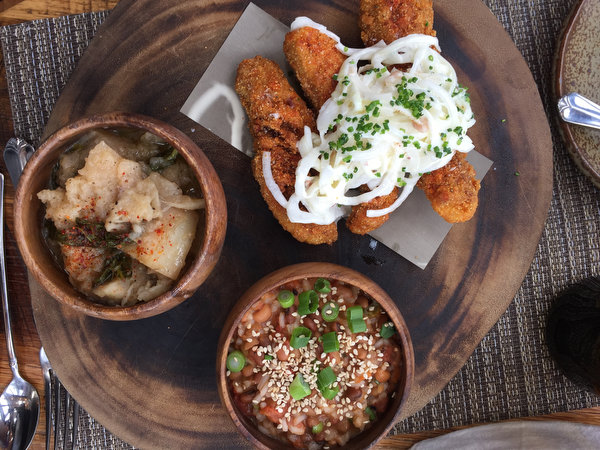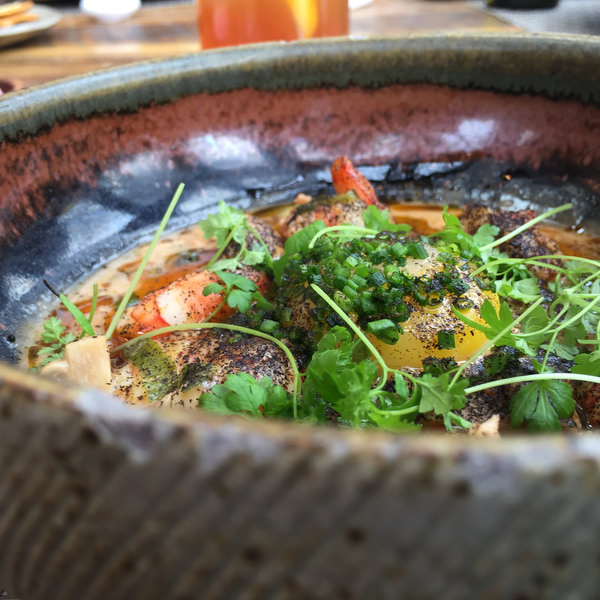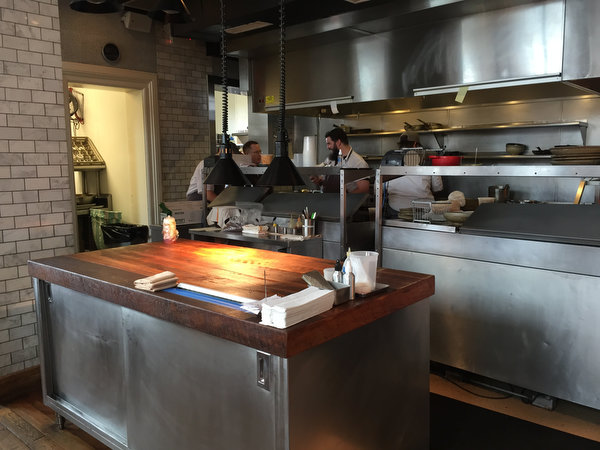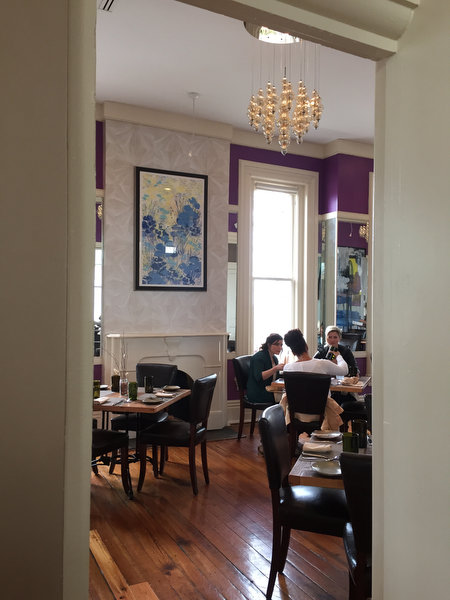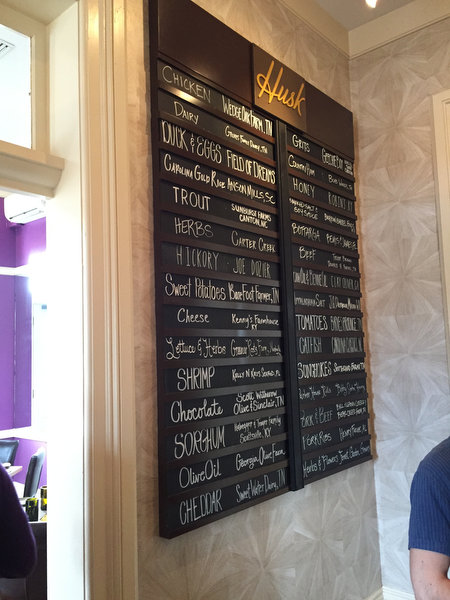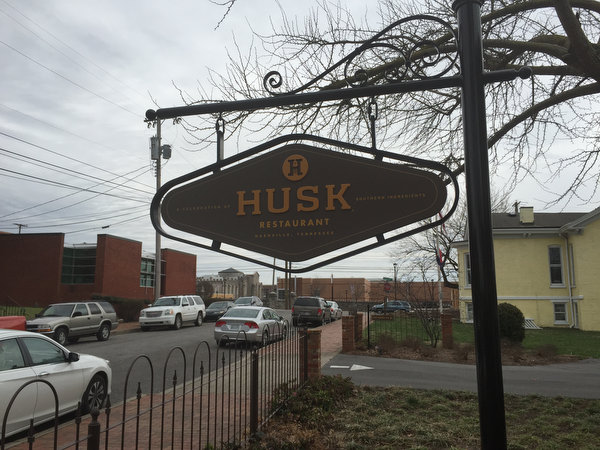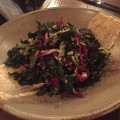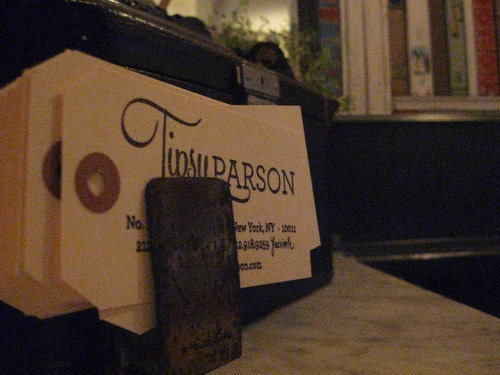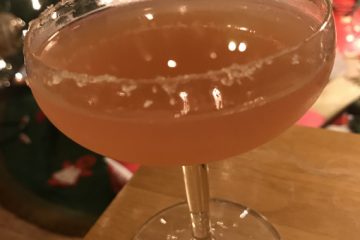Chef Sean Brock calls his restaurant Husk “a celebration of Southern ingredients.” I call it a window into a culture — one he’s dusting off and opening wide. Let the fresh air come in!
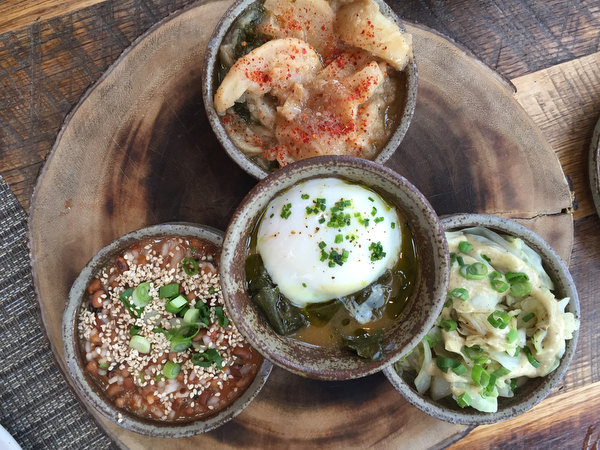
“Seed-saving, heirloom husbandry, in-house pickling and charcuterie programs by the culinary team are the basis of Husk’s cuisine,” says the Husk website.
That’s an oversimplification, though. If you’ve read the New Yorker profile of Brock — and you should, here’s a link: True Grits — or own Brock’s beautiful cookbook, Heritage, you know he’s like the Churchill of Southern cuisine: fighting, leading, willing it back from its destruction.
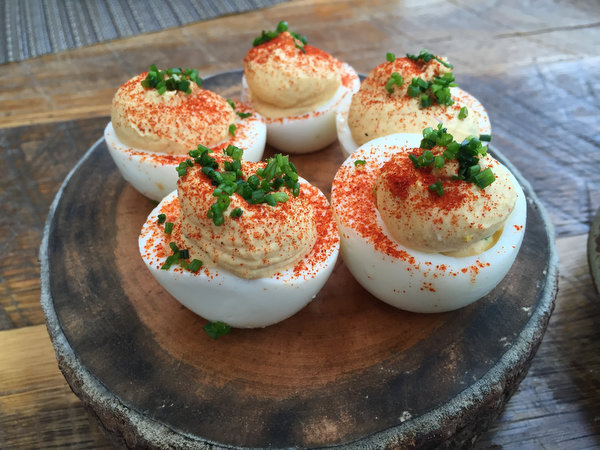
Deviled eggs, which are made with a splash of pickled okra juice.
Brock is one of those rare chefs who doesn’t just order a tomato from a nearby grower and call his restaurant farm-to-table. He works the land with farmers, bringing back old breeds of pigs and Southern varieties of vegetables, beans, rice, even sesame. These crackers surrounding our order of Pimento cheese are made with benno.
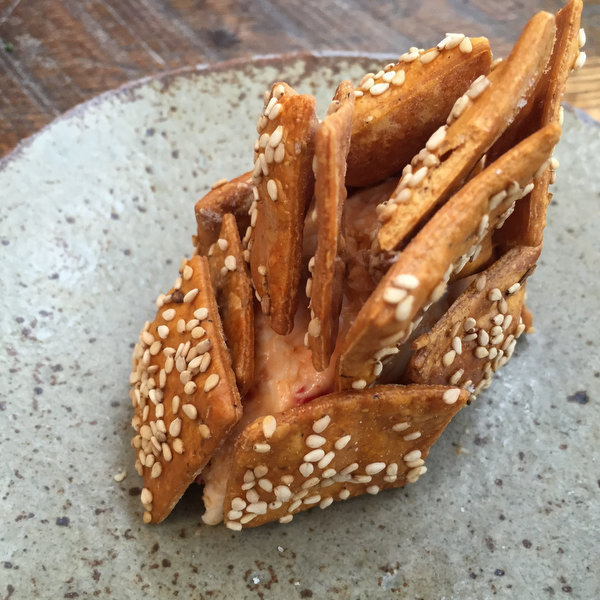
Pimento cheese with benne wafers. (Insanely good. Recipe here on the Garden & Gun website: How Sean Brock Makes Pimento Cheese.)
From the New Yorker piece: “We planted this whole area with benne last year and almost killed ourselves,” Brock said. “There are pictures of me just standing in jungles of it.” He reached down and plucked a small white blossom near the ground and held it up to me. It smelled sweet and faintly nutty—a lot better than the pork bone. Benne is the African form of sesame, brought over with slaves in the seventeen-hundreds. It was once a staple of the Charleston kitchen, its flour used to make delicate cookies and breads, and to thicken and flavor dishes like oyster stew. Yet the original strain, quite different from modern sesame, fell out of favor a century ago and is only now back in production. Brock tossed the blossom into the weeds. “It just pisses me off,” he said. “I’ve dedicated my life to this craft and they can’t give me the tools to do it right. Those crops just disappeared between 1930 and 1980—that fifty-year period when, I don’t know . . . shit went south.”
Shit is back.
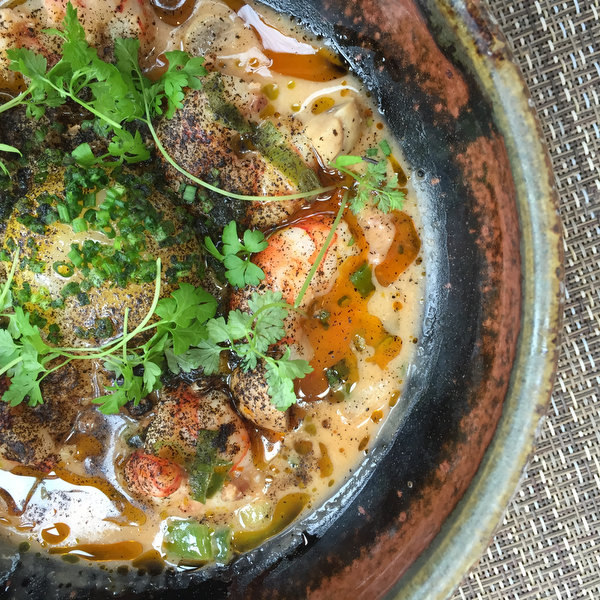
The original Husk is in Charleston, South Carolina. Sean Brock is also chef-owner of McCrady’s, which takes a more contemporary, some might say avant garde, approach to Southern cuisine.
I visited Husk Nashville. First for late-night drinks, after the dining room had closed, and again for lunch, so I could taste the food.
Oh the food! Shrimp and Grits, made with mushrooms and herbs, was with so rich and flavorful it made my heart melt.
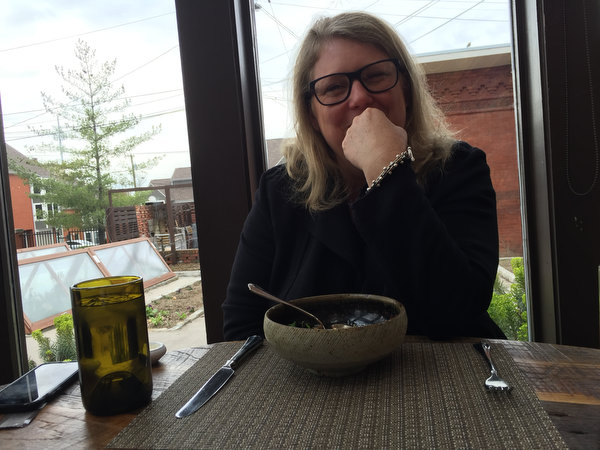
Simply gorgeous.
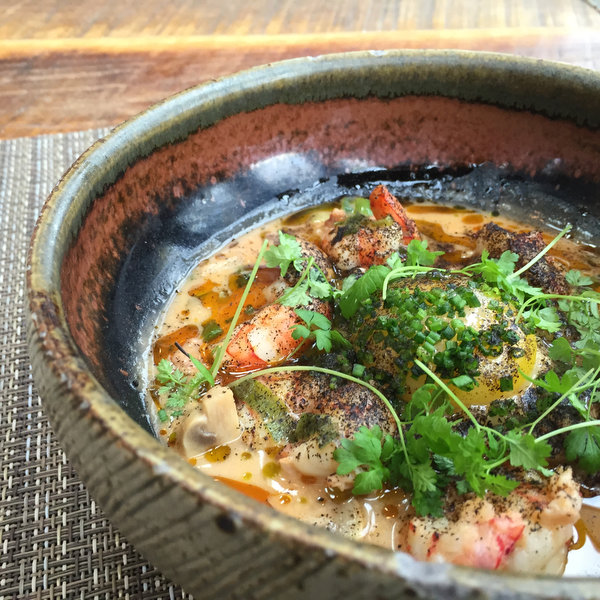
The Plate of Southern Vegetables.

Turnips, Hoppin’ John, Cabbage and Grits.
Every one of them beautiful. Delicious. Crunchy when they should be, soft where they need to be. Sweet, bright. Balanced. And each one unique — tasting of what it should.

My friend Adam, documenting the delicious Deviled Eggs.
Even the bread and butter were stunning: steamy, sweet, nutty, airy.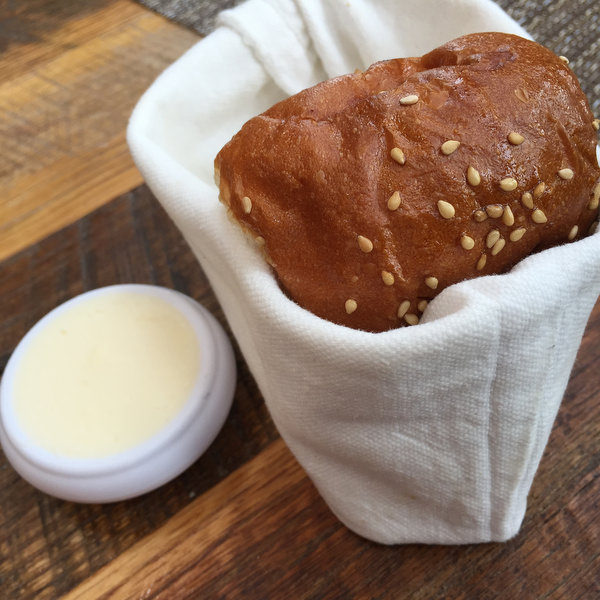
The oyster Po’Boy:
The fried chicken:
The catfish:
Of the above, I only tasted the catfish, but it was delicate and crispy with a bright bounce. The remoulade on top was creamy and cool.
I think I drew the lucky straw this time around.
My experience wasn’t the extravaganza I’ve sometimes indulged in when visiting a famous restaurant afar, but I’m so glad I got the chance to taste this food and see this restuarant: this is a chef who is changing cooking.
The 411 on Husk: 37 Rutledge St., Nashville, Tenn. 615-256-6565, husknashville.com.


